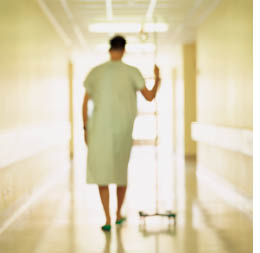Get Moving ASAP

ICU patients, many laden with tubes and breathing devices, may seem fragile and vulnerable.
But Alex Truong, assistant professor of medicine at Emory, has been conducting research into the benefits of early mobilization for ICU patients, developing a set of coordinated protocols to help even the sickest patients begin to sit, stand, and walk again as quickly and safely as possible.
Physical therapists would be an essential part of making this happen, Truong knew: “Nurses and doctors underestimate what our patients can do physically. Physical therapists are best at challenging patients.”
Encouraging critically ill patients to be physically active can seem counterintuitive. But research shows that the adverse reaction rate for early mobility efforts is between 1 percent and 3 percent. The most common negative reactions are drops in oxygen saturation and blood pressure.
Research by Truong and others has shown that bed rest for patients may hurt more than help. A long stint of hospital bed rest may lead to a weakened state for subsequent years—including decreases in nerve conduction, debilitating muscle weakness, and challenges in going back to work or resuming an active life. Research has shown that early mobilization efforts can decrease complications, shorten hospital stays, and lower hospital readmission rates.





